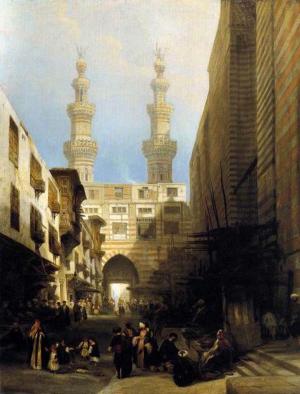| Author: | Sabine Baring-Gould | ISBN: | 9781465599049 |
| Publisher: | Library of Alexandria | Publication: | March 8, 2015 |
| Imprint: | Language: | English |
| Author: | Sabine Baring-Gould |
| ISBN: | 9781465599049 |
| Publisher: | Library of Alexandria |
| Publication: | March 8, 2015 |
| Imprint: | |
| Language: | English |
The river Tamar can be ascended by steamers as far as Morwell, one of the most picturesque points on that most beautiful river. There also, at a place called ‘New Quay,’ barges discharge their burdens of coal, bricks, &c., which thence are conveyed by carts throughout the neighbourhood. A new road, admirable as one of those of Napoleon’s construction in France, gives access to this quay—a road constructed at the outlay of a Duke of Bedford, to whom belongs all the land that was once owned by the Abbey of Tavistock. This skilfully engineered road descends by zigzags from the elevated moorland on the Devon side of the Tamar, through dense woods of oak and fir, under crags of weathered rock wreathed with heather. From the summit of the moor this road runs due north, past mine shafts and ‘ramps,’ or rubble heaps thrown out of the mines, and meets other roads uniting from various points under the volcanic peak of Brent Tor, that rises in solitary dignity out of the vast moor to the height of twelve hundred feet, and is crowned by perhaps the tiniest church in England. Seventy or eighty years ago no such roads existed. The vast upland was all heather and gorse, with tracks across it. An old quay had existed on the river, and the ruins remained of the buildings about it erected by the abbots of Tavistock; but quay and warehouses had fallen into decay, and no barges came so far up the river. The crags on the Devon side of the Tamar rise many hundred feet in sheer precipices, broken by gulfs filled with oak coppice, heather, and dogwood. In a hollow of the down, half a mile from the oak woods and crags, with an ancient yew and Spanish chestnut before it, stood, and stands still, Morwell House, the hunting-lodge of the abbots of Tavistock, built where a moor-well—a spring of clear water—gushed from amidst the golden gorse brakes, and after a short course ran down the steep side of the hill, and danced into the Tamar.
The river Tamar can be ascended by steamers as far as Morwell, one of the most picturesque points on that most beautiful river. There also, at a place called ‘New Quay,’ barges discharge their burdens of coal, bricks, &c., which thence are conveyed by carts throughout the neighbourhood. A new road, admirable as one of those of Napoleon’s construction in France, gives access to this quay—a road constructed at the outlay of a Duke of Bedford, to whom belongs all the land that was once owned by the Abbey of Tavistock. This skilfully engineered road descends by zigzags from the elevated moorland on the Devon side of the Tamar, through dense woods of oak and fir, under crags of weathered rock wreathed with heather. From the summit of the moor this road runs due north, past mine shafts and ‘ramps,’ or rubble heaps thrown out of the mines, and meets other roads uniting from various points under the volcanic peak of Brent Tor, that rises in solitary dignity out of the vast moor to the height of twelve hundred feet, and is crowned by perhaps the tiniest church in England. Seventy or eighty years ago no such roads existed. The vast upland was all heather and gorse, with tracks across it. An old quay had existed on the river, and the ruins remained of the buildings about it erected by the abbots of Tavistock; but quay and warehouses had fallen into decay, and no barges came so far up the river. The crags on the Devon side of the Tamar rise many hundred feet in sheer precipices, broken by gulfs filled with oak coppice, heather, and dogwood. In a hollow of the down, half a mile from the oak woods and crags, with an ancient yew and Spanish chestnut before it, stood, and stands still, Morwell House, the hunting-lodge of the abbots of Tavistock, built where a moor-well—a spring of clear water—gushed from amidst the golden gorse brakes, and after a short course ran down the steep side of the hill, and danced into the Tamar.















